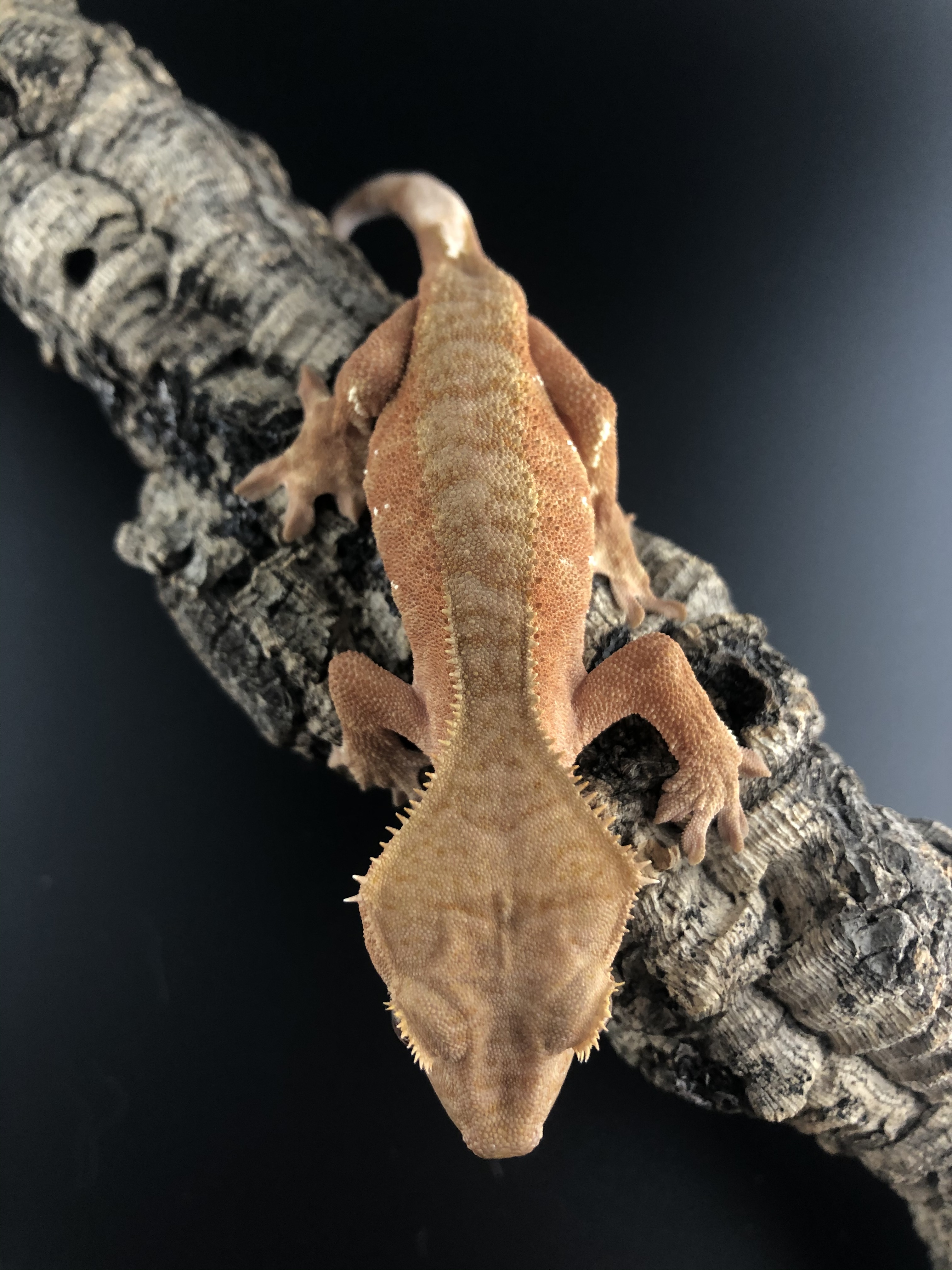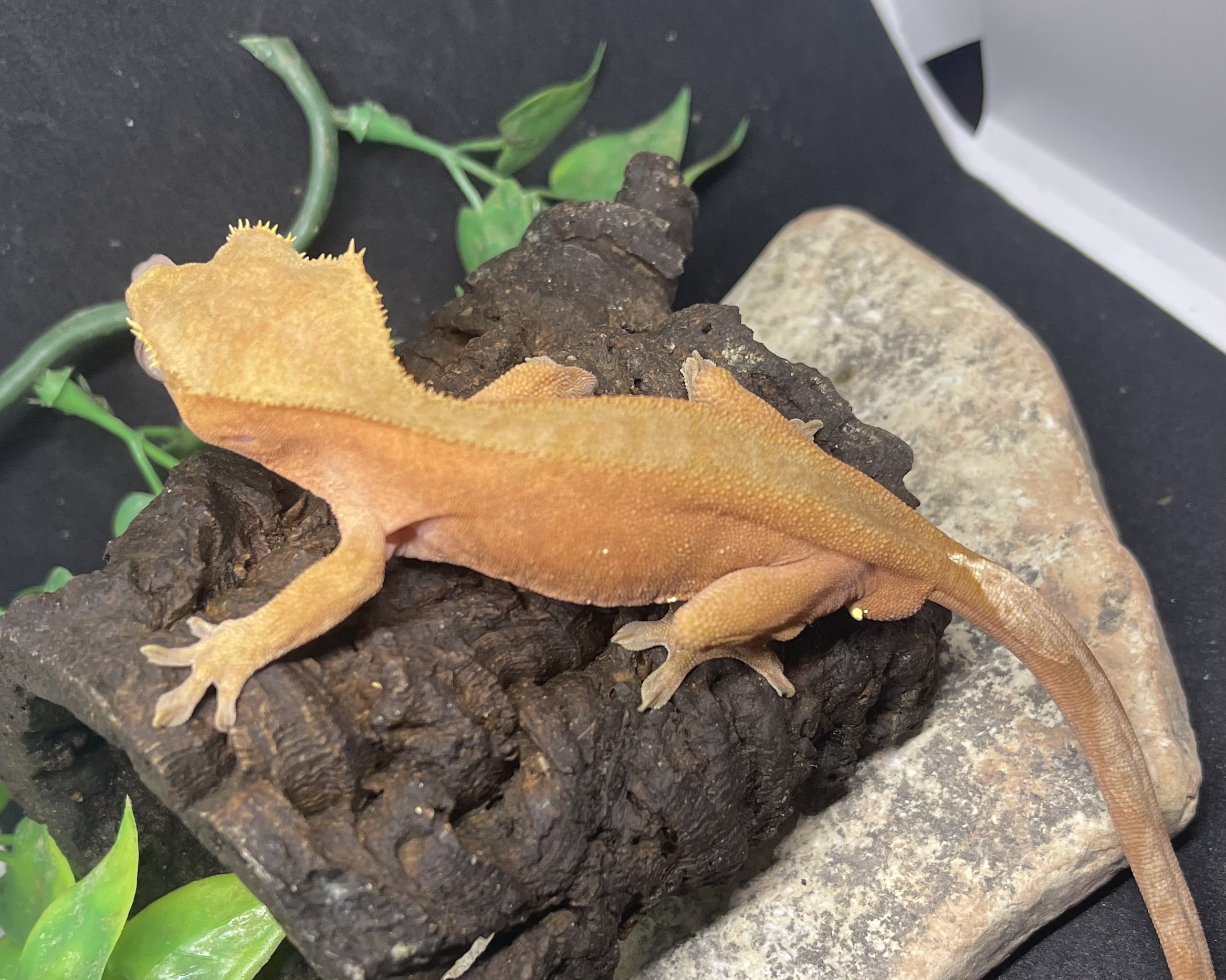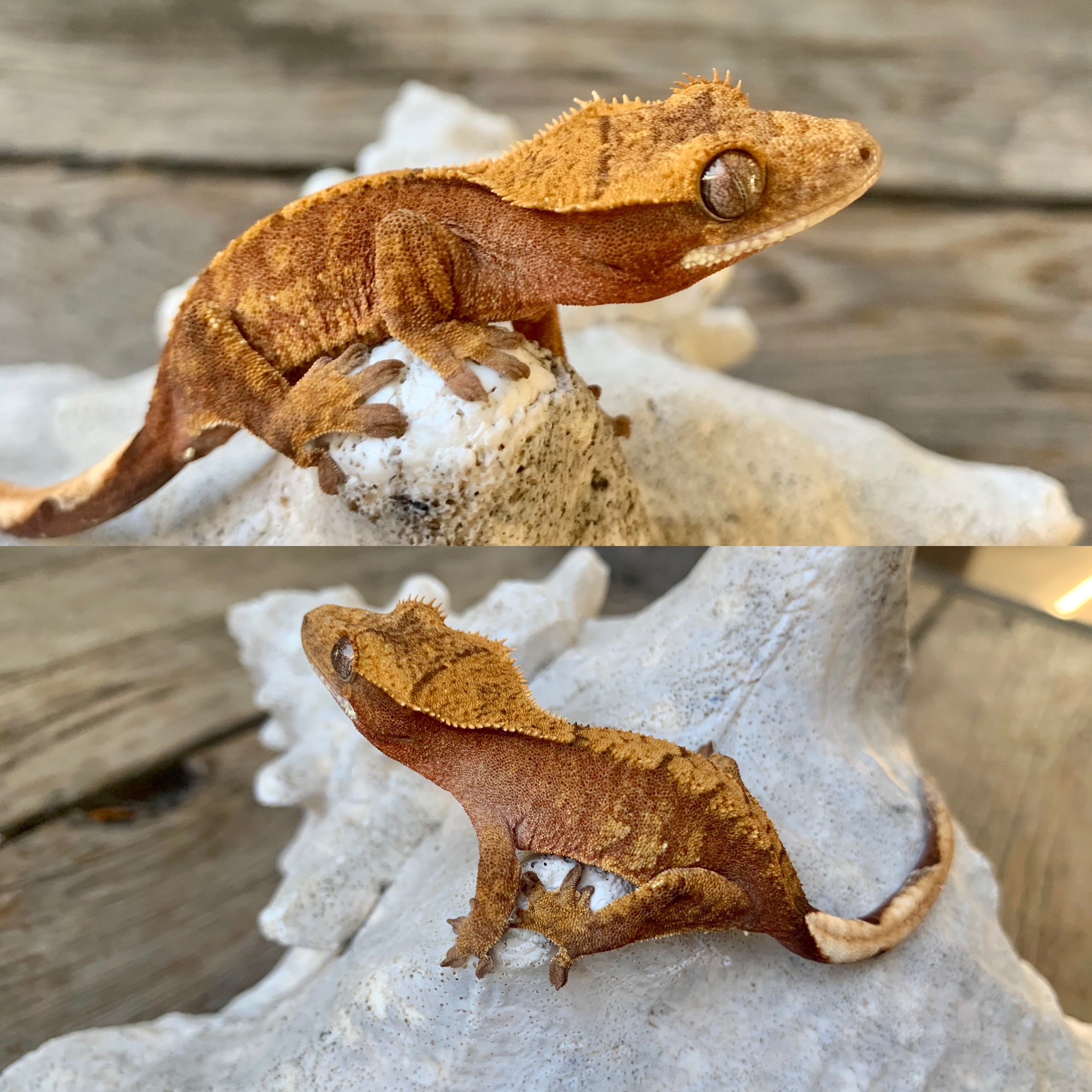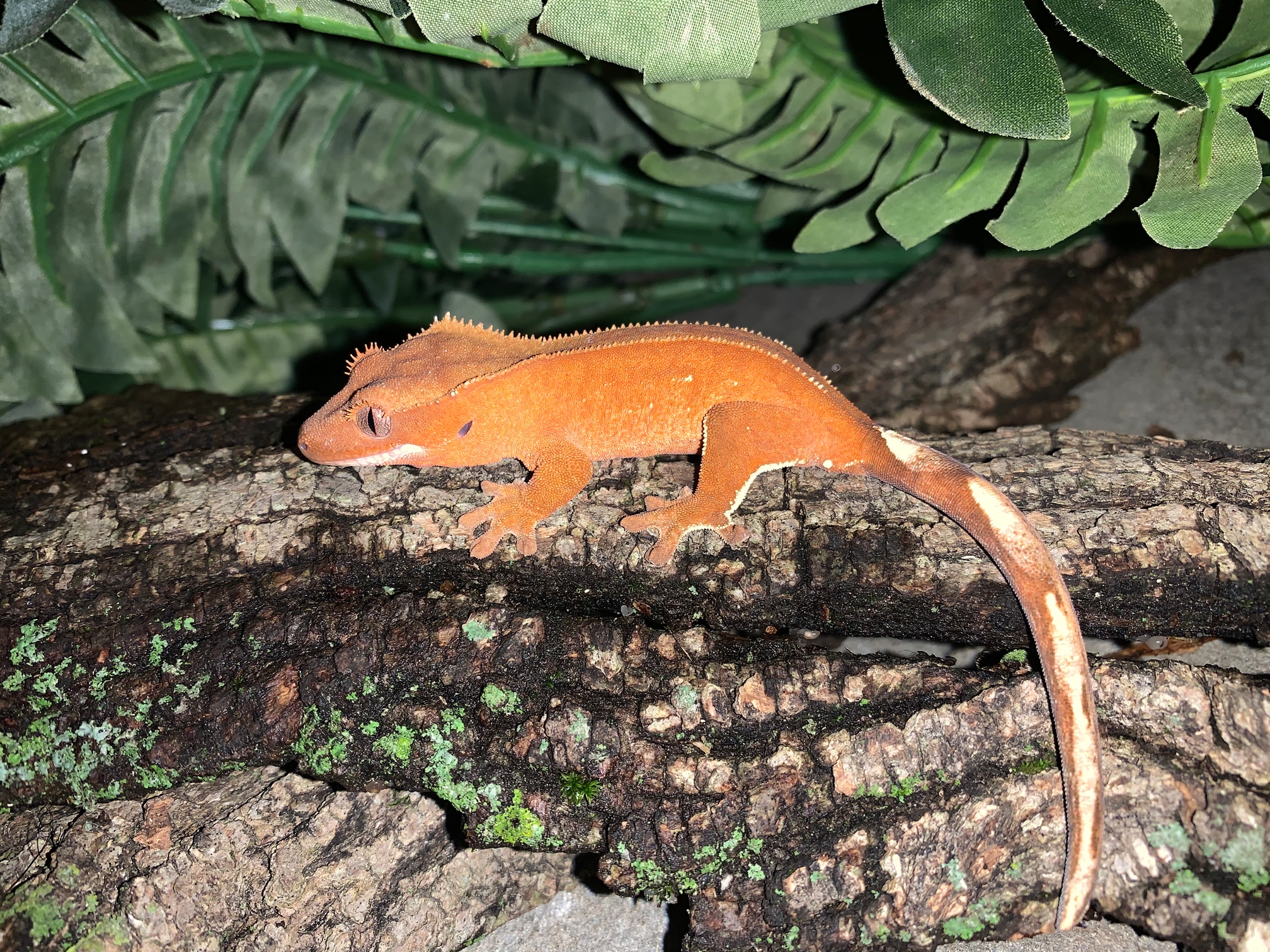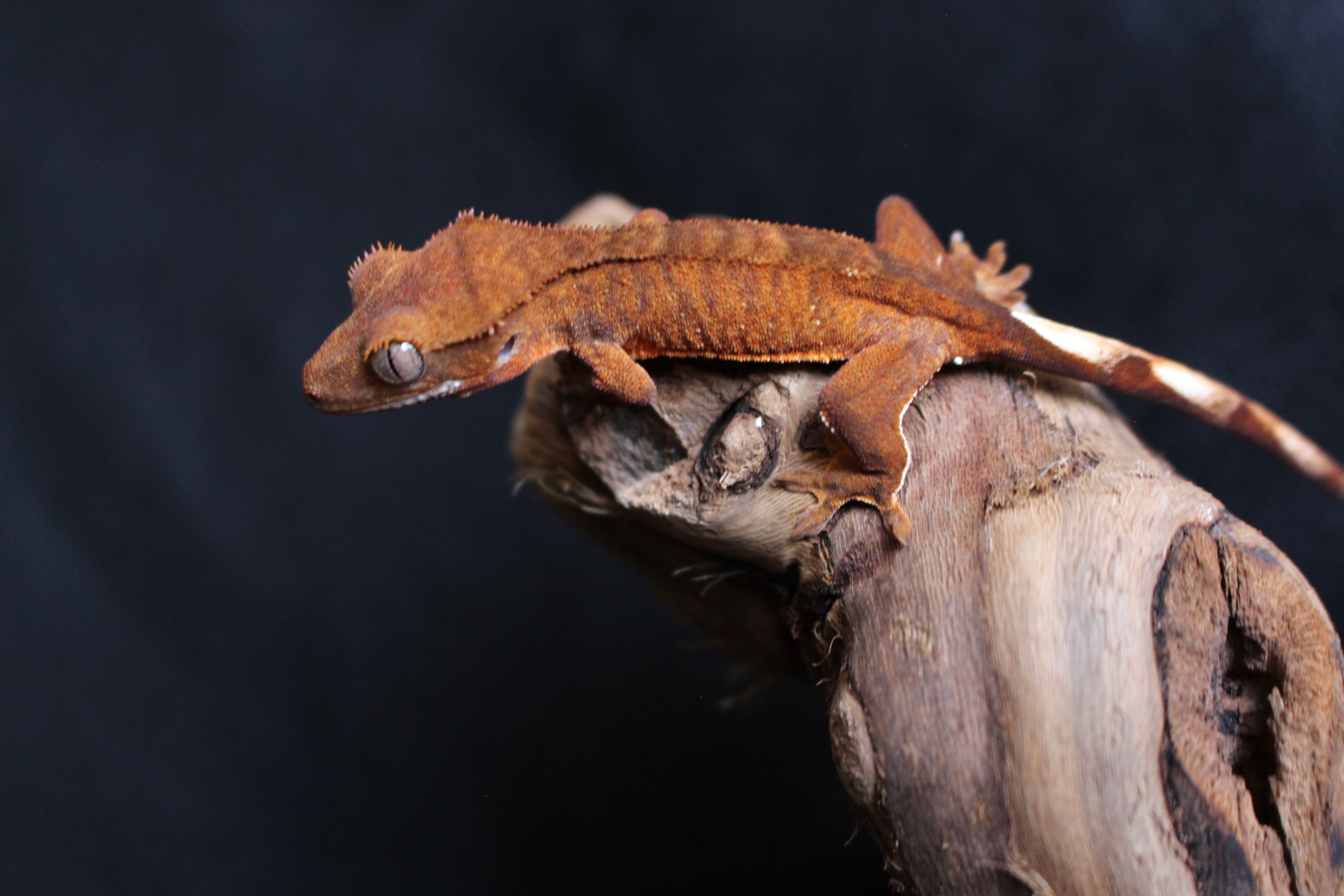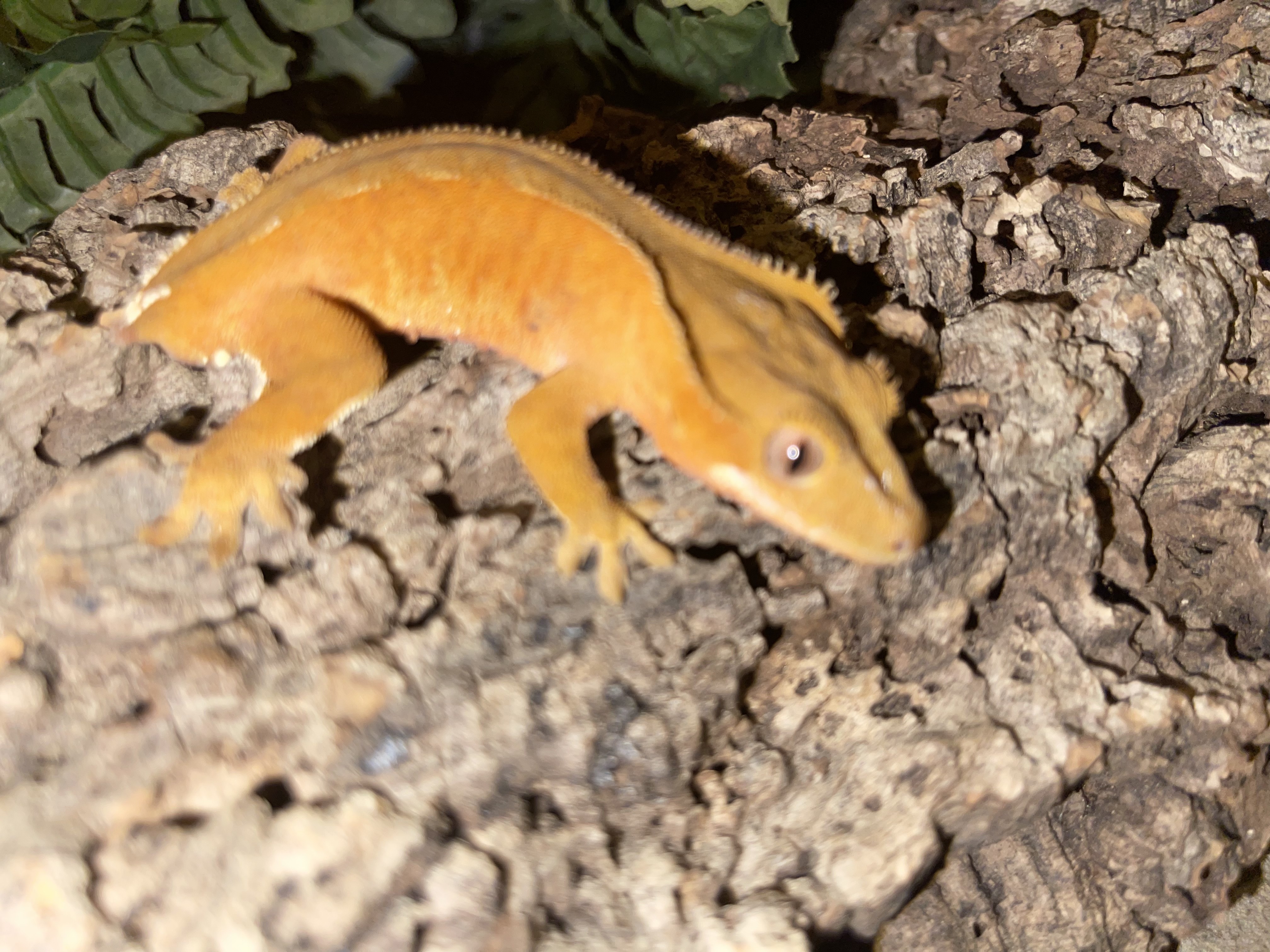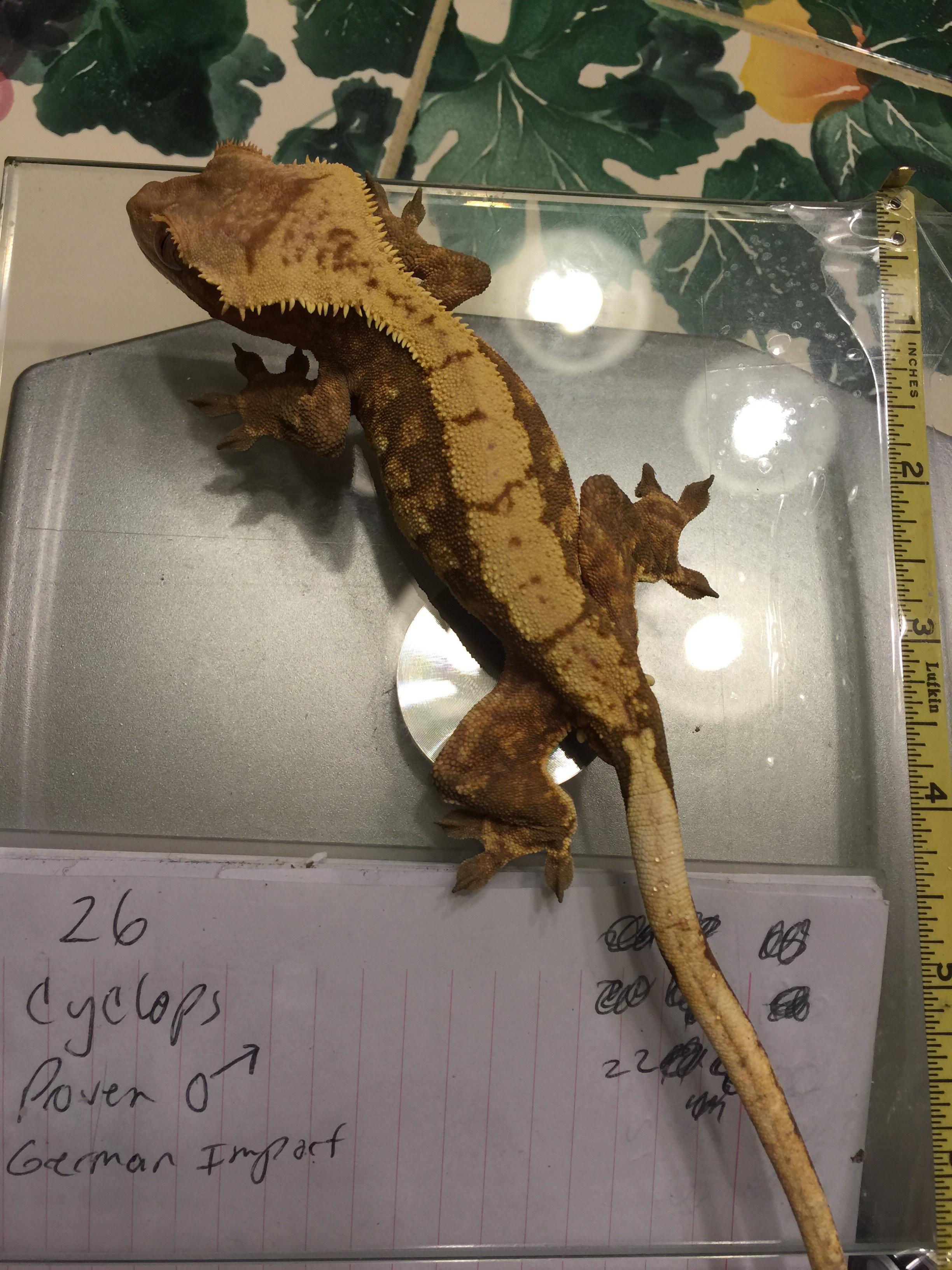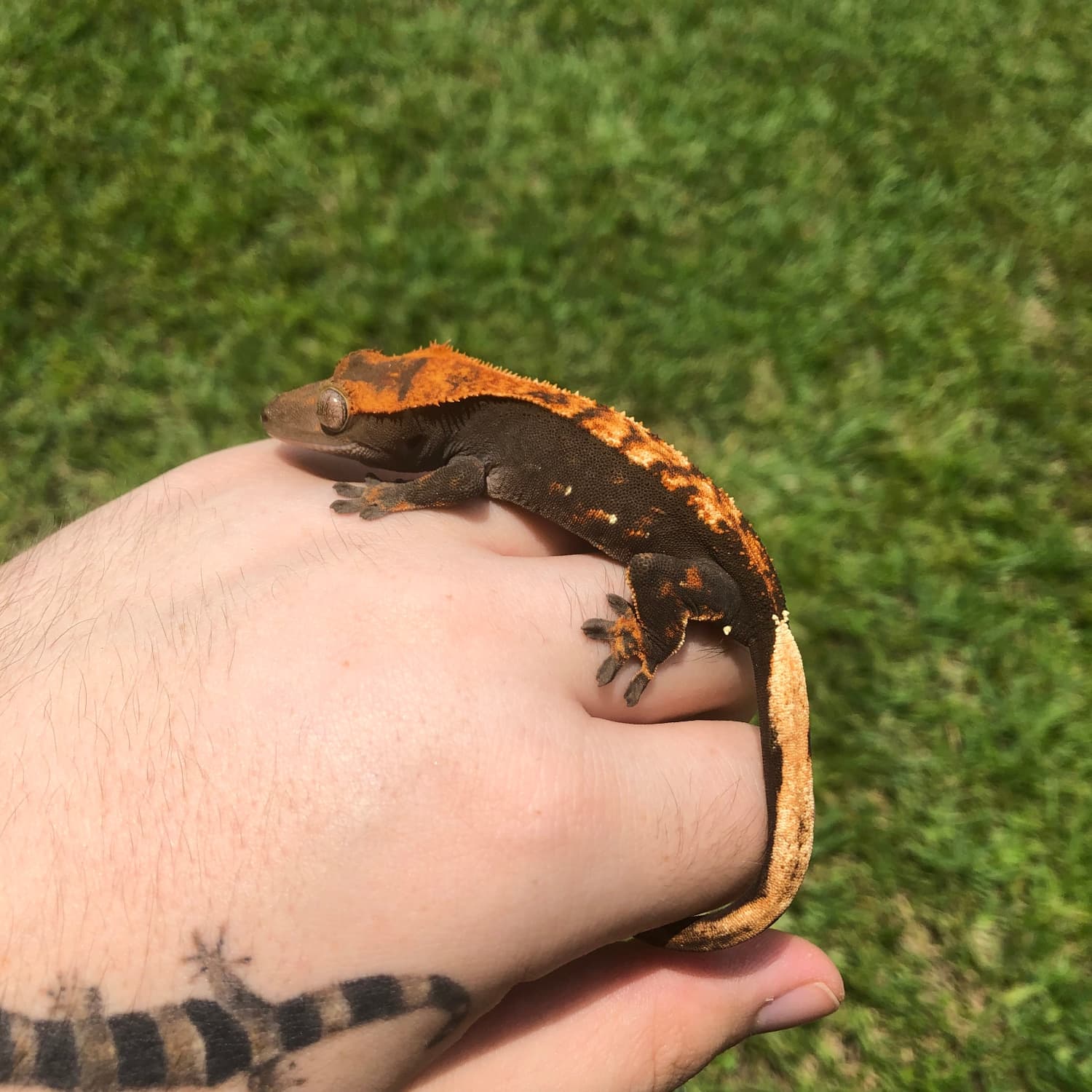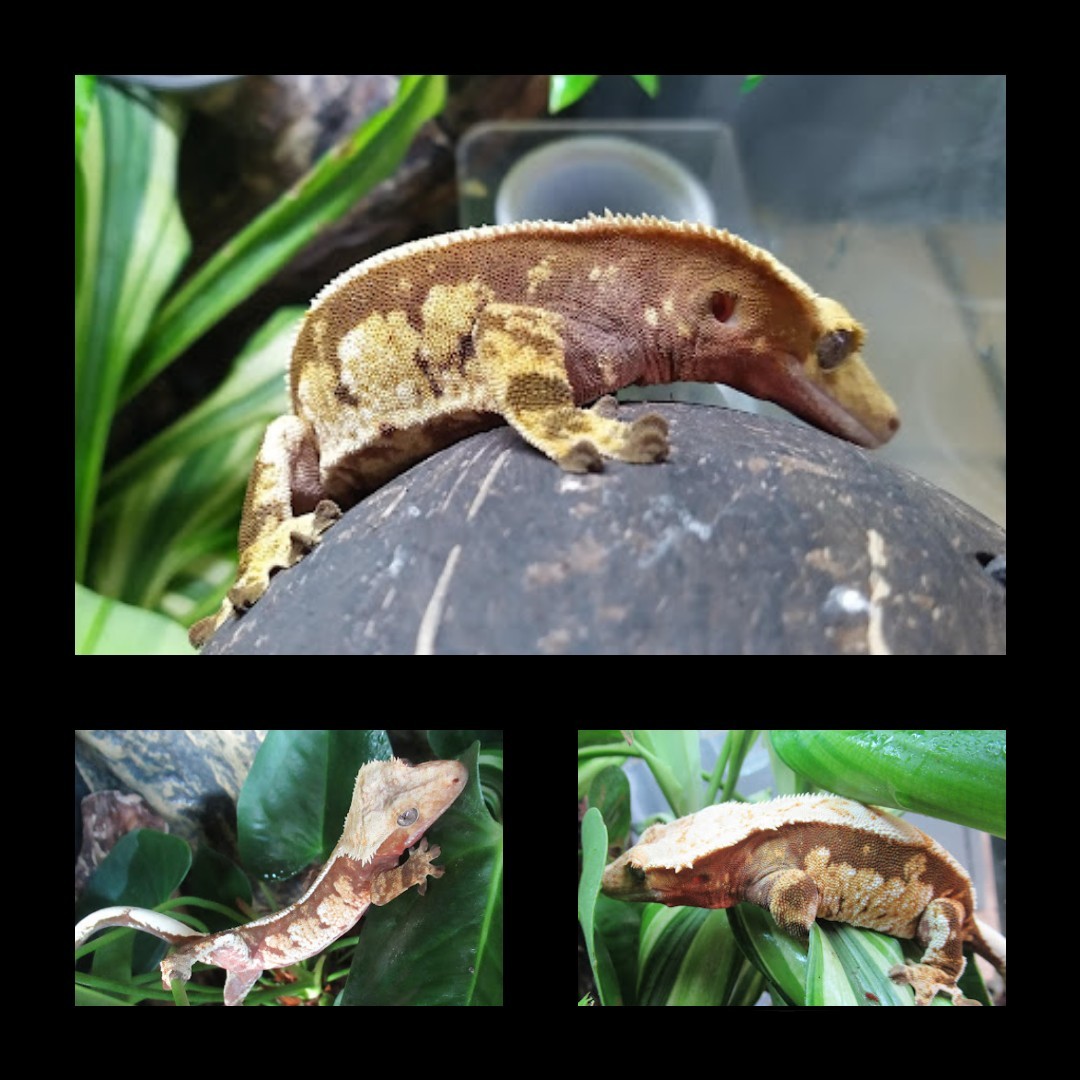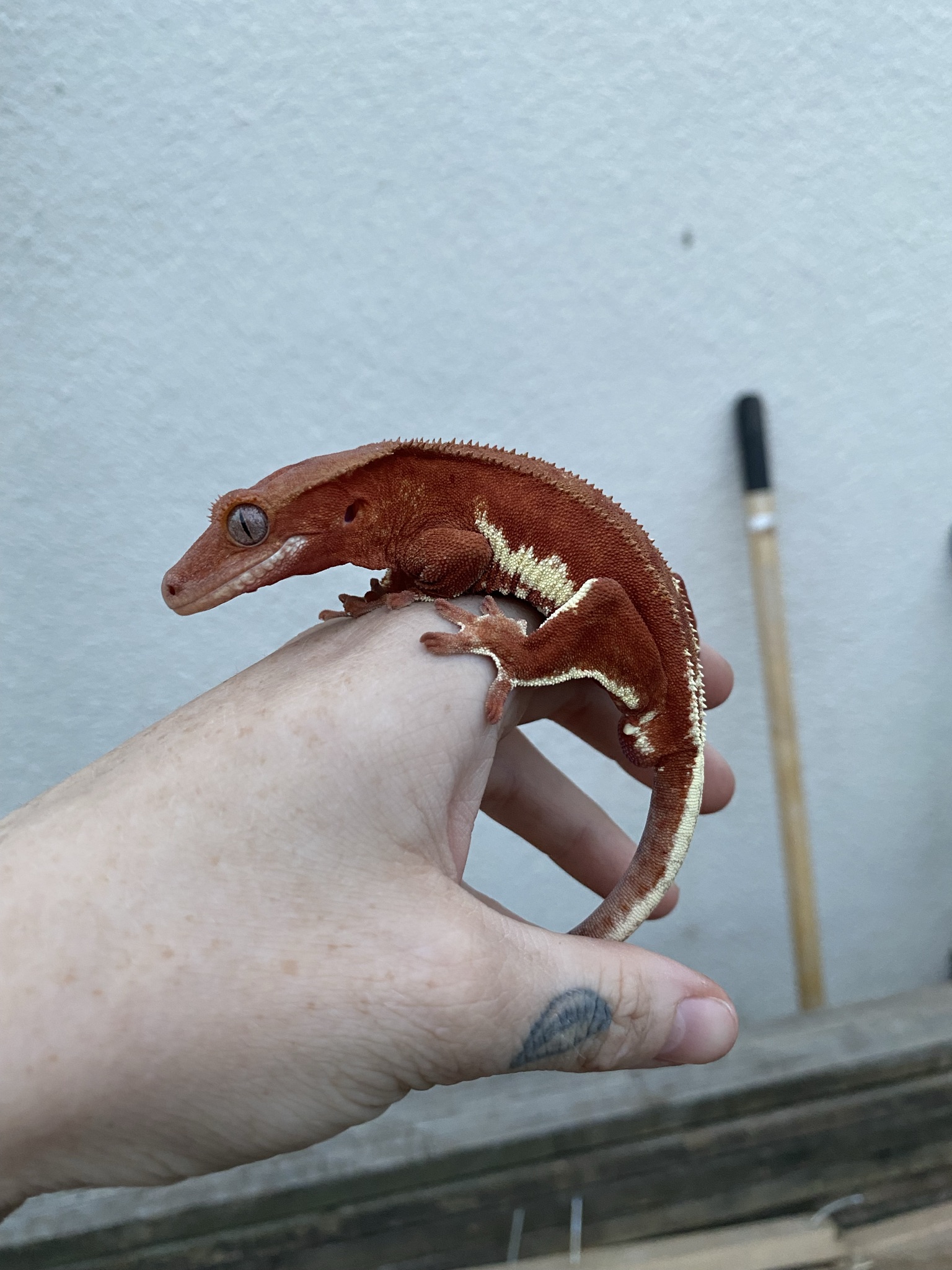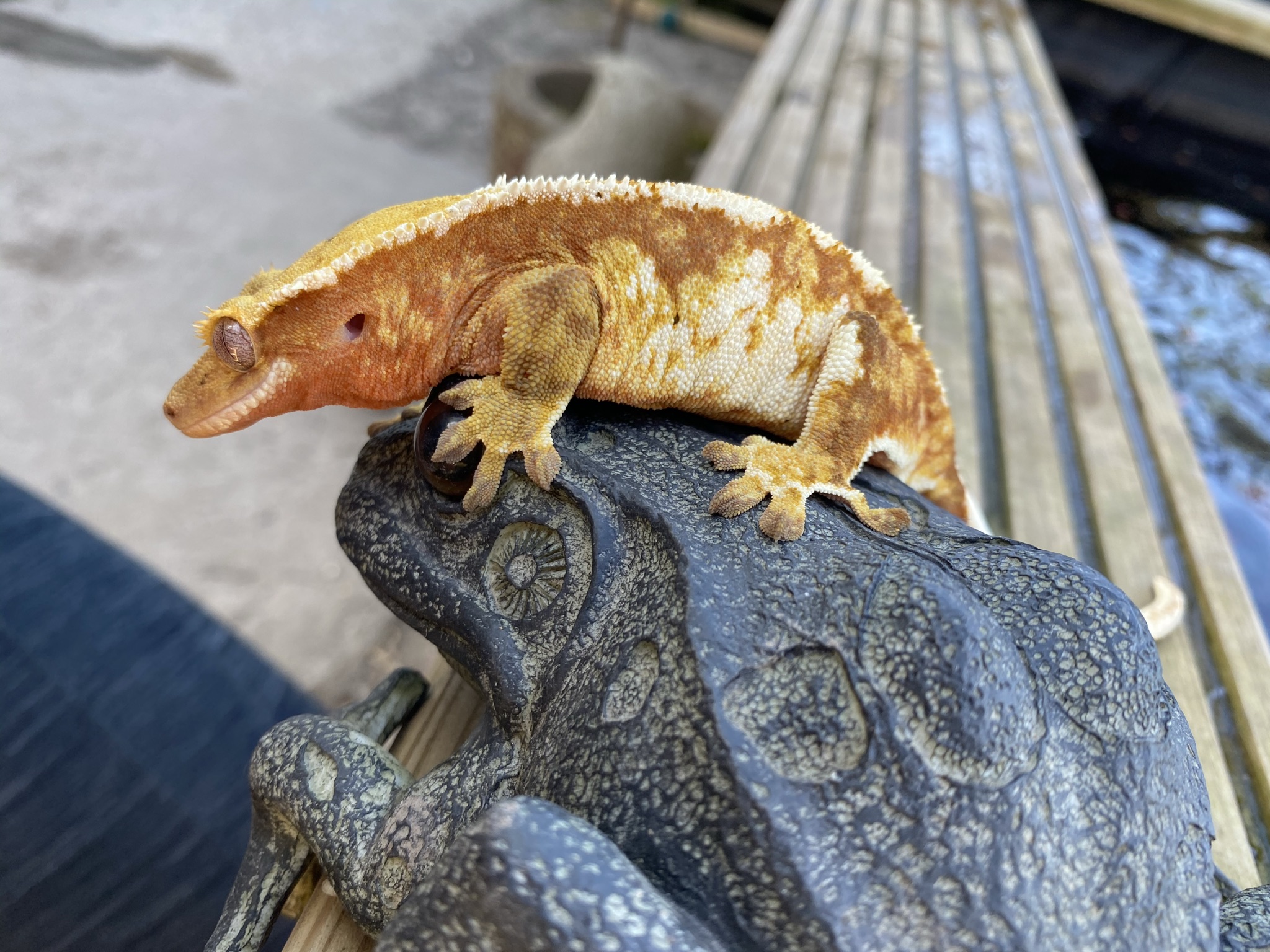Red Base
Type: Recessive
Aliases: Genotype RB
Issues: N/A
First Produced In: Unknown
Availability: Common
Last Updated: 2022-12-21
Do you have any suggestions or corrections for this article?
Click here to contribute feedback
About
Red on its own locus behaves recessively, meaning you can produce reds from non-red animals. Red Base animals can display both WP (White Patterning) and OP (Orange Patterning) or either one individually. It has proven difficult to remove all of the OP , which sometimes has a yellow tone, in red animals. There is evidence showing a correlation with black base , as both pattern colors are possible on red and black animals, and because we can produce red tiger stripes on some animals without the black base.
History
At the onset of our hobby, some wild-type animals were described as buckskin, but there was a range of interpretations. Some were very dark, like what we call black and brown base, and some were a light tan or dirty yellow. These geckos, after reviewing some historical photos, appear to be displaying combinations of traits. The effects of them being naturally combined are beneficial, and/or not harmful for survival in the wild. From these variations, it is fairly easy to see how black base, yellow base, phantom, and hypo forms began to emerge more with selective breeding causing them to separate into distinct phenotypes.
Appearance
Body
The red base can come in a wide range of colors and hues due to how it interacts with other traits. Punnett Table calculations show there are at least 12 shades of red, which is what we find in the hobby today. This ranges from dark blood reds to dirty reds, to fire truck reds, to bright neon, to pink, and light pink or cotton candy pink. All variations in red can be attributed to multiple trait interactions caused by phantom , hypo , OP , WP , or several of these combined.
Controversy
The term polymorphic was used to describe these animals and is correct, however, it became interpreted wrong in the hobby. This single interpretation has slowed the advancement of genetic understanding, in our community, more than any other factor to date. Please refer to “Polymorphic” in part 1 of Foundation Genetics
Proven Lines
Harry Red Line
Related Traits
Primary Base Colors:
Black Base, Yellow Base
